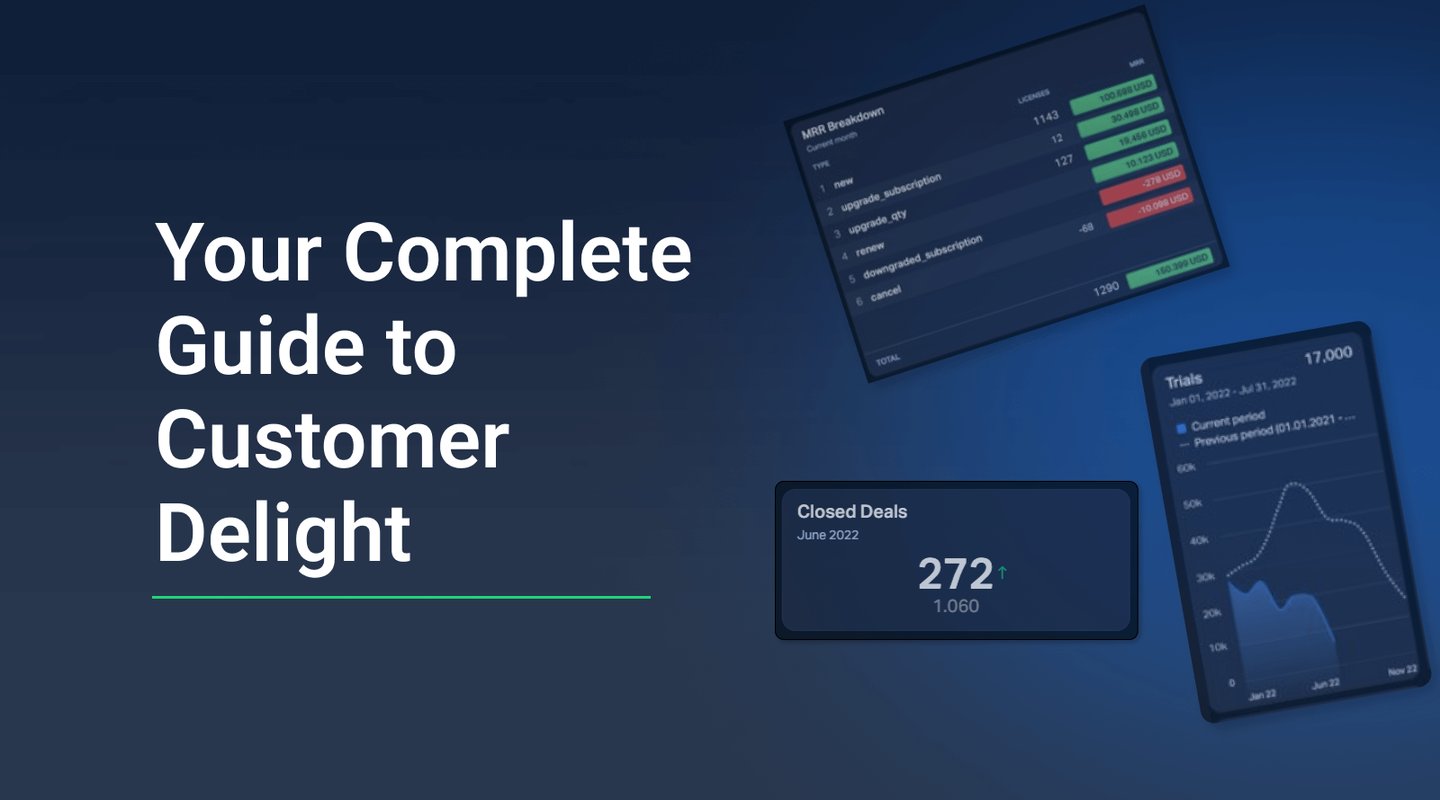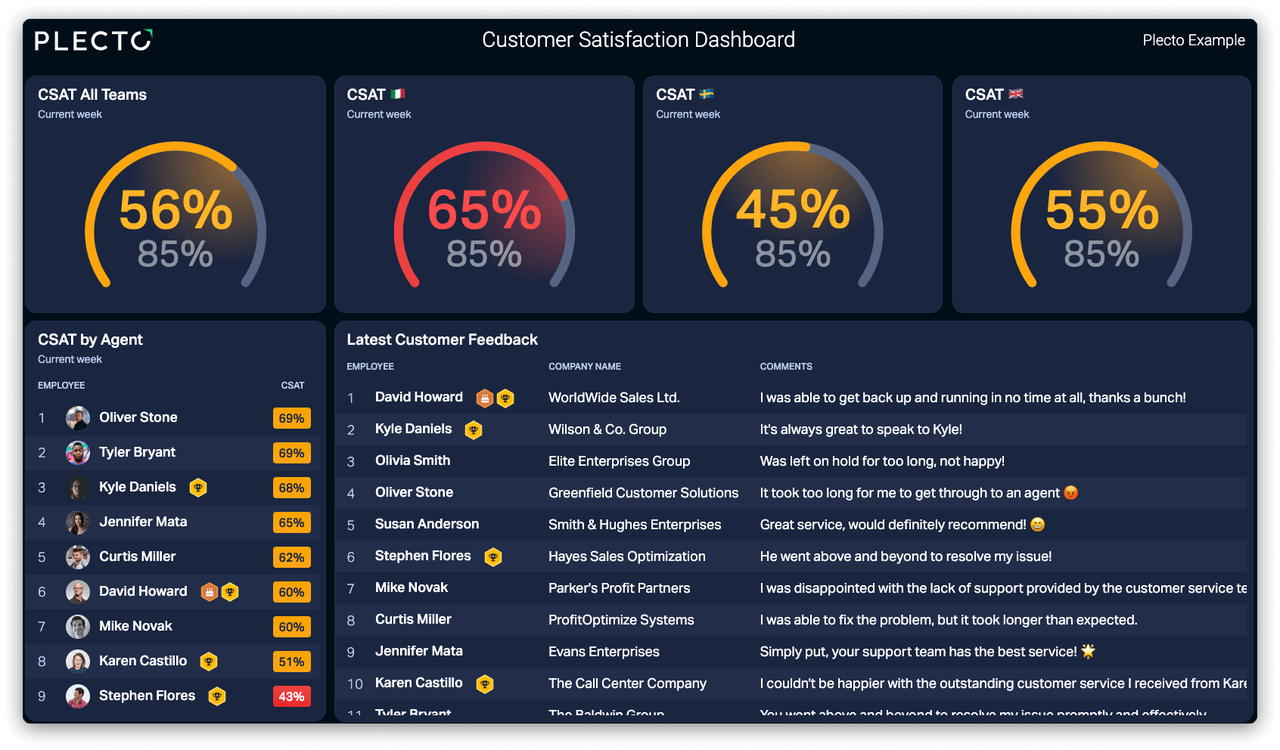The phrase “customer delight” may be confusing at first. You may wonder what exactly it means to delight a customer and how to go about it.
Customer delight is when your customer is so happy with your brand, product, or service that they tell others about you. Customer delight means exceeding your customer’s expectations by making them go, “What! That exists? You can do that?” or just simply, “Wow!”.
Prioritizing customer delight is effective for growth because it generates positive word of mouth and increases the chances of your customer remaining loyal to your brand in the long run.
In this article, we’ll explain why you need to delight your customers and how it can help your business. Let’s start by explaining how customer delight is different from customer satisfaction.
Customer Delight vs. Customer Satisfaction
Customer satisfaction is meeting the needs of your customer. For example, when your customer says, “hey, I want something to help me track my team’s performance.” You deliver an effective progress-tracking software solution—nothing more, nothing less.
This differs from customer delight, which puts the customer’s needs first, creates satisfied customers, and goes beyond that. Customer delight creates a great customer experience and often gives the customer a positive, emotional reaction to the brand.
Customer delight is where you always want to be on the customer’s hierarchy of satisfaction (see visual hierarchy below).
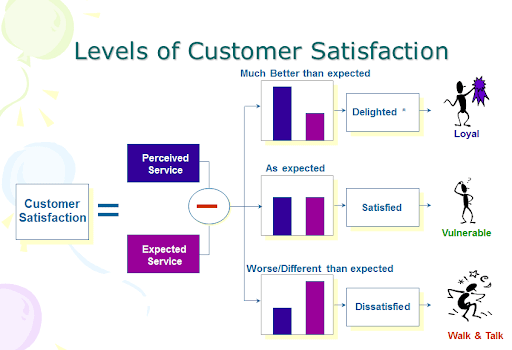
Source
This is one of the reasons customer delight is a key factor of inbound marketing. Customer delight helps the inbound sales loop because delighted customers bring new customers to the company cheaply and efficiently—through word of mouth.
5 Strategies to Delight Your Customers
But how do you incorporate customer delight into your business to maximize returns? Here are the best strategies you can implement to achieve this.
1. Provide Real-Time Support
One of the simplest ways to fill a customer with delight is to provide quick, almost instant complaint resolutions.
A study by Hubspot says 93% of customers will buy again from companies with excellent customer service. Another one from Salesforce says that 78% of customers will buy again from companies that offer excellent customer service, even after a mistake.
If you are unsure of how to start providing real-time support through customer service, start by creating a strategic hiring plan. A strategic hiring plan will help you choose the right personnel for key teams like customer service, marketing, sales, and operations teams.
Next, you should ensure these key departments work together to achieve the same goal, which is customer delight. Implementing Customer Relationship Management (CRM) software helps businesses centralize, optimize, and streamline communication.
Put key systems in place to allow customers to reach you faster. These systems could be a live chat function, social media, and even a phone line option.
For your live chat support, it’s a good practice to combine the use of an AI and a customer service representative to take over when needed. Here’s an example of what your live chat function may look like:

Source
It’s important to note that the goal isn’t to sell but to help the customer and exceed customer expectations.
2. Offer Personalized Experience
People like to feel special and valued. To do this, you need to understand customer behavior and tailor messages or even services to their needs. Research by Epsilon says that 80% of customers are more likely to purchase if a brand offers personalized services.
Creating a personalized experience isn’t a nice to have, but a value proposition that leads to boosting sales and customer loyalty.
You can only achieve real personalization when you understand the different types of customers you have, their behaviors, and their tendencies. This information will give you all you need to create tailored messaging and experiences that suit each customer.
Email marketing is a great way to offer a personalized experience. It helps you reach out to customers individually. A simple way to implement personalization is to use your customer’s name in your email campaigns instead of “hey there.”
You should also send your customers emails about specific products/services they use or about products/services they may be interested in based on their purchase behavior.
The image below shows an email example using these two tips. The message is addressed to a specific customer, and it suggests tips that could help the customer’s individual needs.

Another tip will be to go the extra mile and remember the little details. Sending things like handwritten notes or emails to your customers on their birthdays and special occasions creates a positive experience for them.
A personalized dashboard is another way to offer personalized experiences to your customers. When a customer opens your app to use your product or service, the information they see on their app should reflect them, i.e., their tastes and interests, etc.
Little things like their address, card details, and purchase history should reflect without much effort. This is a good way to create a seamless experience that makes happy customers.
Build your first dashboard.
Start your 14-day free trial today
3. Build a Community
Interaction is a key part of human existence. People like to be part of something, a group, or a cause. Creating a community where customers can express themselves and interact with others will prove invaluable. A community will help you understand your customers better, get feedback, and even understand the trends.
It’s also invaluable to the customers because they often prefer to solve problems themselves by applying solutions given by other community members or by using self-service tools like blogs.
A good way to build your community is through a forum attached to your blog where customers can discuss your products, review them, and make recommendations.
Creating a course, in addition to the blog, is another great value add that can help improve customer experience. The course will draw potential customers into your community because you are offering for free something they may otherwise have to pay for. This new influx will increase your website traffic and provide you with leads, which will eventually turn into sales.
A comment section, as shown below, is an example of the forum discussed earlier. It's a great tool for customers to leave their feedback and discuss topics related to your brand with other customers.
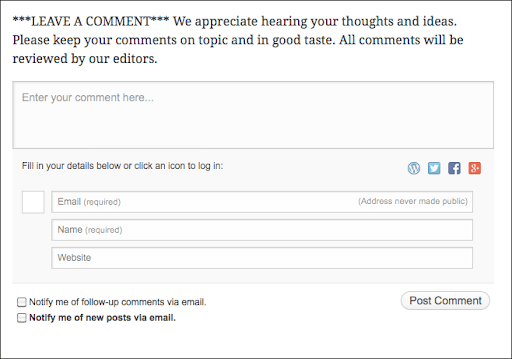
Another way to grow a community is through social media, especially one like Twitter. Twitter is a great medium for instant feedback, real-time conversations between you and your community, and trend spotting. Twitter gives you a real-time look into everything you can implement to deliver a delightful customer experience.
You can also create private groups dedicated to your community. This can be done on Facebook, Discord, and other similar platforms. Use these groups to nurture your community. And remember, the priority here is not to promote your latest products or blog posts. Instead, use the groups to interact with your community and help them find solutions to their needs.
4. Offer Consistent Multi-Channel Support
Offering consistent multi-channel support makes you easily available and helps customers get solutions easier and faster. This creates a delightful customer experience, increases brand trust, and leads to customer retention. It also benefits mainly when the brand or business is struggling through a tough time keeping up their social position. Having a PR strategy to channelize the crisis uplifts the morale of the customers.
Multi-channel support means customers can reach you in different ways on different platforms, so they can choose whichever is convenient for them. Provide support via as many channels as possible. These include your website, social media, email, phone, in-app, and in stores.
Here’s how we do it at Plecto:
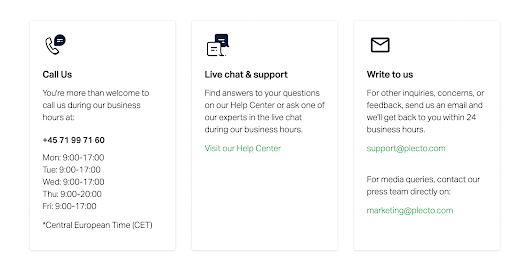
Consistent multi-channel support doesn’t stop at making yourself available to customers. It also involves delivering top-notch customer service by employing active listening skills like paraphrasing, showing empathy, and using short affirmations when talking to the customer. This tells the customer you are listening, and you care, which often delights them.
5. Analyze Customer Feedback
Customer feedback, in many ways, can make or break a business. It’s easy to get caught up in the day-to-day activities of your business and forget who your product/service is for.
This is where analyzing customer feedback helps. If you correctly implemented your multi-channel support, you should receive a lot of feedback. It could come in the form of complaints, queries, or appreciation from a delighted customer. Whichever way it comes, it’s important not to get clouded by emotions and remember that feedback is a good thing.
Here’s an example. The customer posted a Tweet telling the brand what would delight them.

Source
Feedback like this is a gold mine for companies. McDonald’s can take action and delight their current customers, plus attract more potential customers.
This is a clear example of how feedback shows trends and potential directions your organization can take to stay relevant in the industry, lead it and expand its customer base.
The point to strive for is a place where customer feedback is compiled, analyzed, and used to create objectives and strategies. To solve this, it may be a good idea to use customer feedback tools. This way, important feedback isn’t lost but utilized to delight the customer.
In Closing
Customer delight can sometimes sound like a lot of work, but it’s not. It's a combination of the little things you do to make a customer’s life easier. Those details are the ones that bring a smile to their faces. Customer delight is a necessary part of the customer journey that helps create an outstanding customer experience and turn regular customers into delighted brand advocates.
Giving your customers real-time support shows you are willing to serve them. Creating a personalized experience shows each customer you care. Building a community allows you to get close and discover what they think.
Analyzing the feedback you receive helps you to provide solutions to their main pain points. Offering consistent multi-channel support means reaching out to your customers wherever they feel comfortable.
Use these strategies to achieve customer delight, which will translate to increased customer retention and company profits.
David Pagotto is the Founder and Managing Director of SIXGUN, a digital marketing agency based in Melbourne. He has been involved in digital marketing for over 10 years, helping organizations get more customers, more reach, and more impact.
